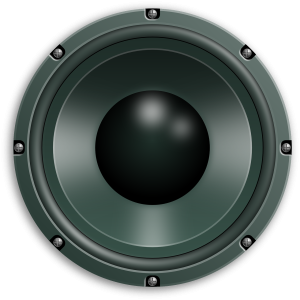Live performances embody the epitome of auditory enjoyment, and the centrepiece of a truly immersive audio experience is undoubtedly the sound amplification system. Ensuring that every note is clearly heard and every beat is felt requires a keen understanding of PA speakers, the stalwarts of public address (PA) systems. This guide serves to enlighten audio enthusiasts and technical operators on maximising live sound through the judicious selection and utilisation of PA speakers.
Understanding PA Speakers
PA speakers are sophisticated audio devices designed to project sound to a large audience. Unlike consumer-grade speakers, PA speakers are built to cope with the challenges of live performance environments, delivering powerful output and consistent sound quality, even at high volume levels. They can be found in an array of settings, from small venues and places of worship to concert halls and outdoor festivals.
Different types of PA speakers fulfil various roles within a sound system. Main speakers, or ‘mains’, provide the bulk of the sound and are crucial for covering the audience area. Subwoofers handle low-frequency sounds, delivering the deep bass that is felt as much as it is heard. Monitors, meanwhile, offer performers on stage a means to hear themselves clearly. Each component must be carefully chosen and configured to achieve the desired audio impact.
Selection Criteria for PA Speakers
The process of selecting the right PA speakers involves consideration of several factors, including venue size, audience capacity, and the type of performance. Large venues require speakers with higher wattage for adequate sound projection, while smaller spaces may benefit more from clarity and sound precision. Specific speakers also cater to the unique acoustic dynamics of indoor versus outdoor settings.
Portability is another key factor. For touring acts or event companies, PA speakers must not only produce top-notch audio but also be easy to transport and set up. Moreover, the durability to withstand the rigours of the road is a non-negotiable trait for any professional-grade speaker.
Speaker Configuration
How PA speakers are configured plays a pivotal role in the overall sound quality. Correct placement ensures even sound distribution, preventing ‘dead spots’ and acoustic interference. It’s important to consider the height at which speakers are mounted or positioned; too low, and the sound may not disseminate effectively, too high, and the audio could lose impact.
A balanced setup involves primary speakers directed towards the main audience, supplemented by secondary speakers covering additional spaces such as balconies or overflow areas. Integrating subwoofers into the mix adds depth and dimension to the sound, but they must be positioned with care to avoid overwhelming the sonic landscape.
The Role of Amplification
Integral to the performance of PA speakers is the quality of amplification. Powered PA speakers come with built-in amplifiers, streamlining setup and reducing equipment clutter. In contrast, passive speakers require separate amplifiers, which can afford greater customisability in sound manipulation but necessitate additional hardware and tuning.
The power rating of the amplifier should match that of the speakers to achieve optimal performance without risking damage. An underpowered amp can cause speakers to distort and an overpowered one can lead to premature speaker failure. As such, understanding the interplay between speakers and amps is essential for any sound engineer.
Connectivity and Control
Modern PA speakers often feature a range of connectivity options, supporting everything from traditional XLR and ¼-inch inputs to digital interfaces. This enables seamless integration with a variety of audio sources, mixers, and other PA equipment. Wireless connectivity is increasingly common, affording operators the flexibility to manage sound remotely.
Onboard control panels can offer adjustments for volume, equalisation, and sometimes built-in effects, offering hands-on fine-tuning for the immediate environment. Advanced PA systems might also allow for remote sound adjustments through software applications, leading to efficient real-time sound management.
Long-term considerations
Investing in high-quality PA speakers translates to better sound reproduction and a more durable setup that withstands the test of time. However, the rapid pace of technological advancements in audio means equipment can become outdated. Forward-thinking audio technicians consider expandability and compatibility with future additions when selecting their PA speakers.
Maintenance, too, should not be overlooked. Regular cleaning of components, checking of connections, and periodic professional inspections prolong the life of PA speakers and ensure they continue to present live sound at its best. The initial cost of high-grade equipment can seem daunting, but factoring in longevity and performance, it is often economically sound.
Conclusion
PA speakers are the linchpins of any live sound setup, responsible for conveying the energy of a performance to the audience. Selecting the right PA speakers involves a deep understanding of the venue, the audience, and the kind of performances that will be delivered. Configurations, amplifications, connectivity, and control on top of long-term thinking about quality and maintenance all contribute to maximising the potential of live sound situations. The ultimate guide to PA speakers is, at its core, about ensuring that the art of sound is delivered with the highest level of professionalism and acoustical mastery. Every element from the thoughtful selection of equipment to its meticulous configuration can make the difference between a mediocre auditory experience and an awe-inspiring sonic journey.
For those seeking to excel in the realm of live audio, embracing the technology and principles that define outstanding PA systems, like those found among PA speakers, is the first step towards achieving acoustic excellence. In doing so, audio technicians and enthusiasts not only elevate the standards of live sound but also enhance the shared human experience that is centred on our love for music and performance.






